LG G8 Review
LG G8 Review
LG's 2019 flagship ticks boxes but not much else
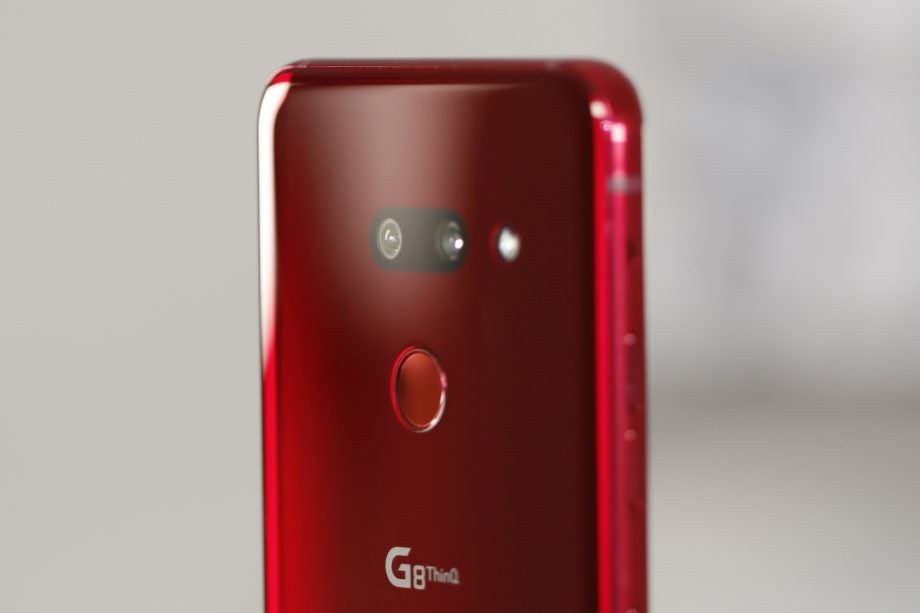
Sections
- Page 1 LG G8 Review
- Page 2 Camera Review
- Page 3 Performance Review
- Page 4 Screen Review
- Page 5 Battery Life Review
Verdict
Overpriced and forgettable, although the LG G8 is an okay phone, the alternatives offer more for less or excel in a particular area. Audiophiles might see value in the G8's specific talents but will likely sway towards dedicated media players instead, leaving a question mark around who this phone is for.
Pros
- Capable audio chops
- Top-tier performance
- Good battery w/ wireless charging
Cons
- Bland design
- Underwhelming cameras
- Disappointing Z Camera functionality
Key Specifications
- Review Price: £TBC
- 6.1-inch Quad HD+ OLED display
- Crystal Sound OLED
- Boombox speakers
- Snapdragon 855 SoC
- 3500mAh battery
- 8-megapixel front camera +ToF Z Camera
- Dual 12/16-megapixel camera
- Air Motion gestures
On paper, the LG G8 ThinQ’s specifications read as you’d generally expect from a top-tier 2019 handset: it comes packing Qualcomm’s newest premium chipset, the latest major release of Android, plenty of memory, storage and promising battery life, not to mention fast and wireless charging.
However, it doesn’t appear to be leading with any one particular message. There’s no multiple-eyed camera arrangement, as on the rear of the Nokia 9 PureView, nor does it boast zoom that will let you see across town in the way of the Huawei P30 Pro.
Instead, LG has produced what appears to be a timely update to last year’s LG G7, and in its own right it isn’t a bad device. However, to turn heads and make sales in the current market it’s unclear if the G8 ThinQ offers enough appeal to tear people away from what else is out there.
Switching to an OLED was the right move for the LG G8
LG has cemented itself as the principal name in the world of OLED televisions, so it’s always seemed odd that the company doesn’t promote the benefits of the tech across other devices within its wheelhouse, such as its smartphones – particularly when key rivals such as Samsung sell AMOLED-toting phones that arguably offer the best viewing experience on the market.
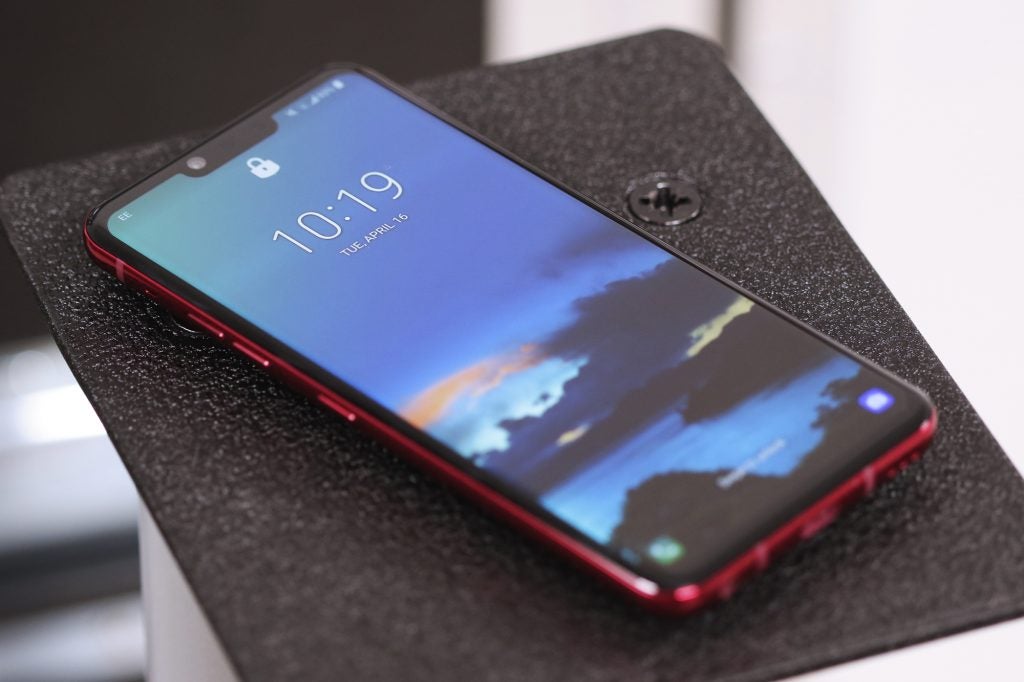
As such, it’s with excitement that I was able to clap eyes on the P-OLED panel found in the G8 ThinQ. It sports all the same standards as its predecessor, with HDR10 and Dolby Vision compliance, complete support for the DCI-P3 colour space, and an impressively crisp 564ppi (pixels per inch). The use of OLED tech in place of LCD also ensures inkier blacks and greater vivacity from colours on-screen.
Related: Samsung Galaxy S10 review
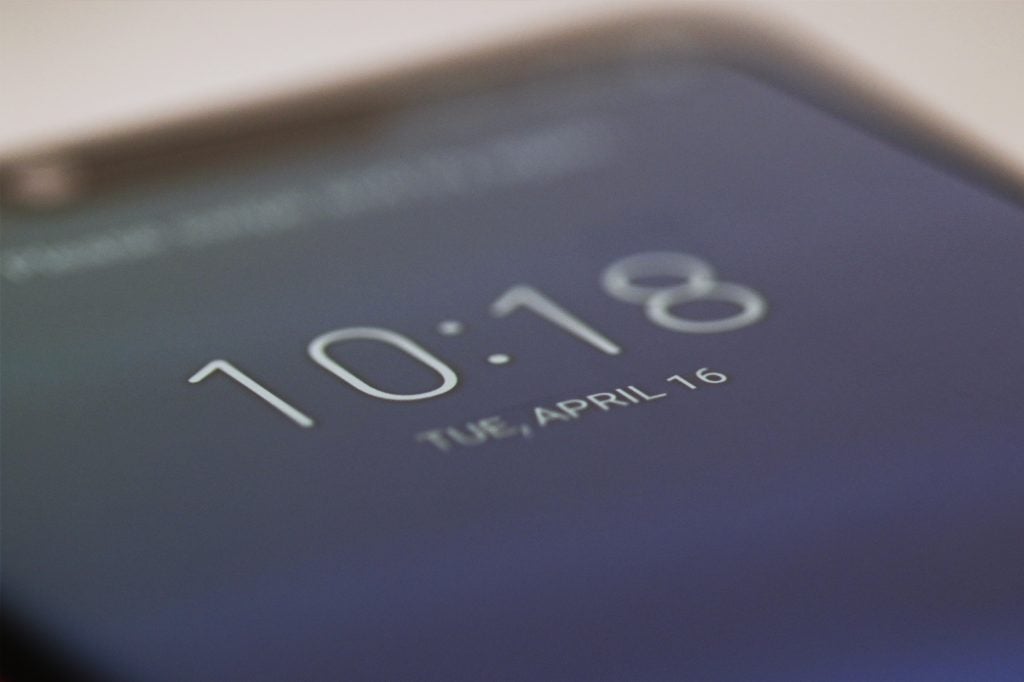
Unfortunately, while a bevvy of established LG phones are approved for HDR viewing when using services such as Netflix, the G8 isn’t yet on the list. As such, you’re limited by the app to HD-only viewing.
Not to be beaten by this – at least until approval is granted, which seems likely – there’s a separate HDR toggle within the phone’s display settings, which can make use of the phone’s impressive overall brightness to create a similarly deep viewing experience. It gives content a subtle but appreciated boost.
The 6.1-inch panel makes for a relatively compact viewing experience (when you consider that the OnePlus 6T and P30 Pro sport displays that break the 6.4-inch barrier), but the phone still feels a touch bulky as a result of its comparatively thick bezels.
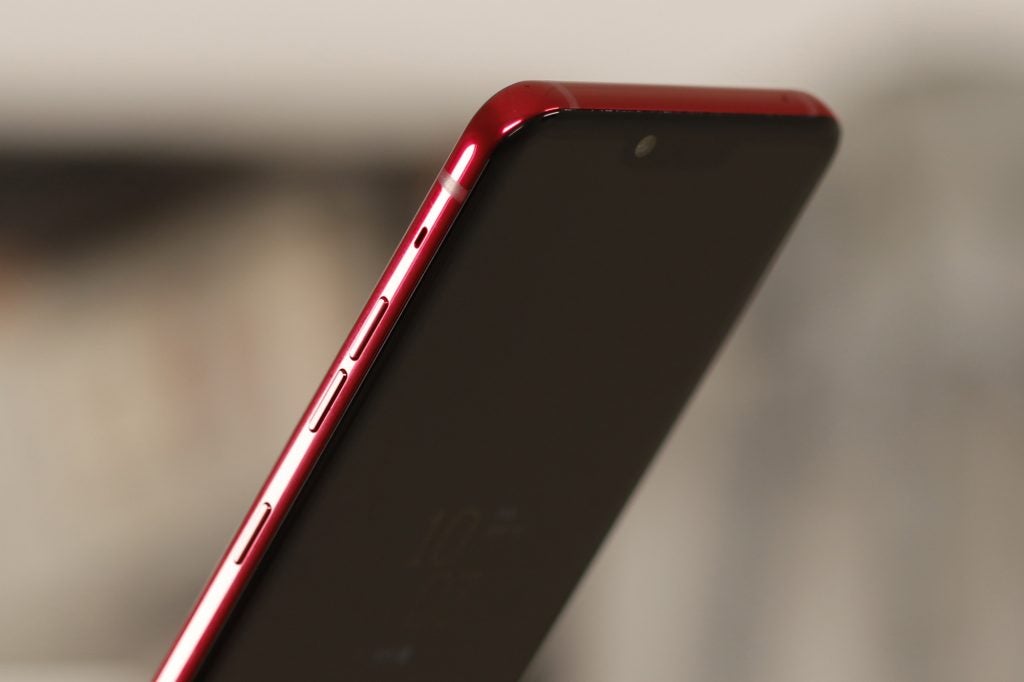
There’s also the matter of the notch. LG has chosen to forego an in-display hole-punch camera (as first seen on the Honor View 20) or a pop-up solution as included on the Samsung Galaxy A80 and instead sticks with a notch in order to accommodate its front-facing camera – and, arguably, one of its biggest differentiating features (more on that in a bit).
Related: Best Galaxy S10 wallpapers
Considering the relatively restrictive colour temperature controls, I was surprised by the level of customisation on offer when it comes to hiding the notch. You could conceal it behind a software-imposed black bar, or you can also customise said bar to adopt a gradient finish or even a rainbow-coloured backdrop.
When using LG apps paired with this feature, you can even choose the tightness of the radius on the rounded top corners of apps. It’s an impressively detailed consideration, albeit completely over the top for the average user.
The LG G8’s standout feature is… odd, but the audio is undeniably good
Beyond the 8-megapixel front-facing autofocus camera, there’s also a separate 3D ToF “Z camera” and an IR arrangement that works with both Face ID-style face unlock (which proves useful when unlocking the G8 in low light) and allows for the phone’s “Hand ID” feature.
The latter is, quite frankly, a bizarre addition that lets you unlock the G8 by hovering your hand in front of the display. Your hand is scanned and the veins in your palm then read.
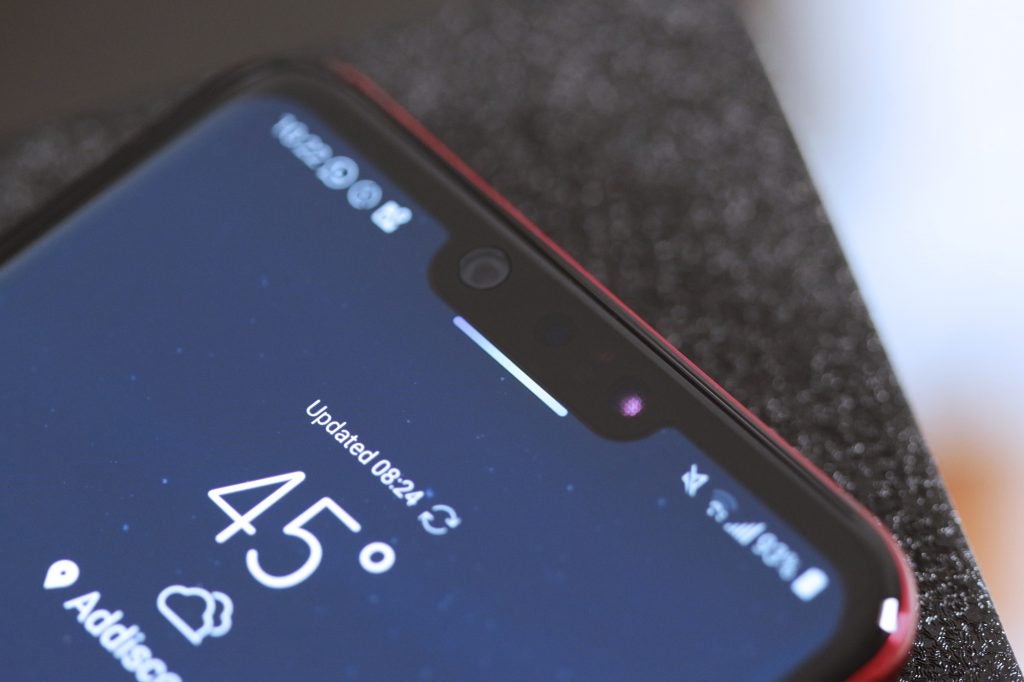
LG actually used the term “Palm Vein Authentication” during the phone’s unveiling, and I’m not sure how I feel about it. Raising your hand high up to unlock the device just feels unnatural, not to mention the fact that you’ll look Doctor Strange-like trying to do that in public.
There’s also the fact that it just doesn’t work all that well. You can double-tap the screen to wake or hover your hand over it, at which point the border of the screen changes colour from red to green depending on how well the phone can get a read of your palm.
By the time you’ve raised and lowered your hand to satiate the system and actually unlocked the phone, I’d wager it would have been infinitely quicker to rely on face unlock, fingerprint unlock or even manually inputting your PIN or pattern.
At least all the technology at play isn’t just for this awkward unlock mechanism. The company’s tagline for this device is “The Touchless Phone” and there are numerous “Air Motion” actions you can perform without actually laying a finger on the display.
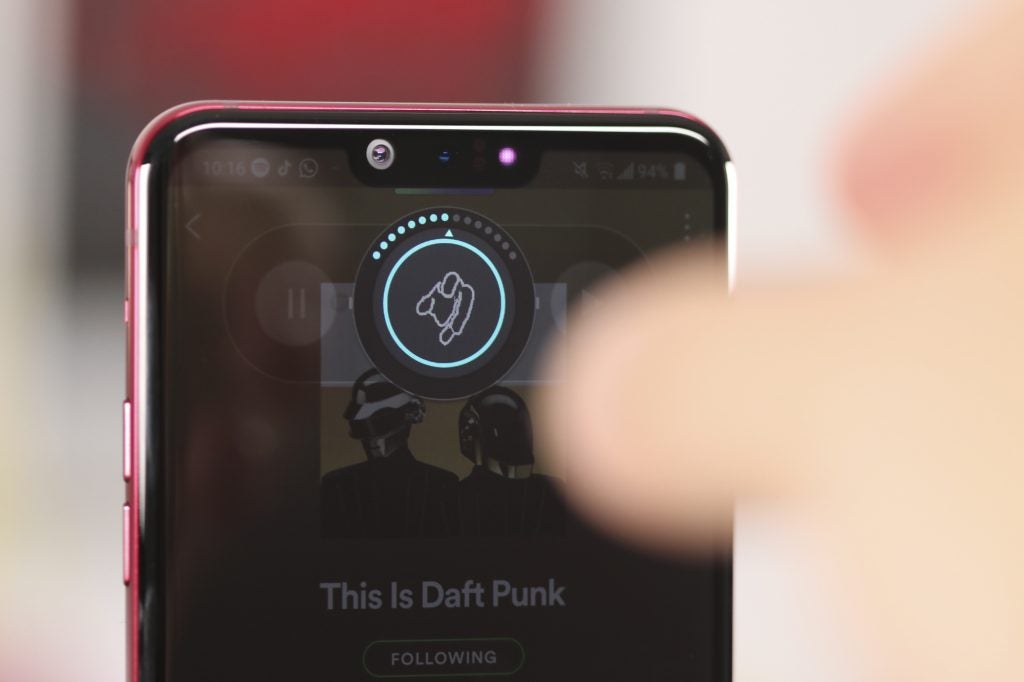
You can change the volume, capture screenshots and quick-launch apps, all by performing different hand movements. It sounds super gimmicky and, apart from the specific-use case of turning off a timer whilst cooking with food-covered hands, I can’t really picture anyone using it on a regular basis.
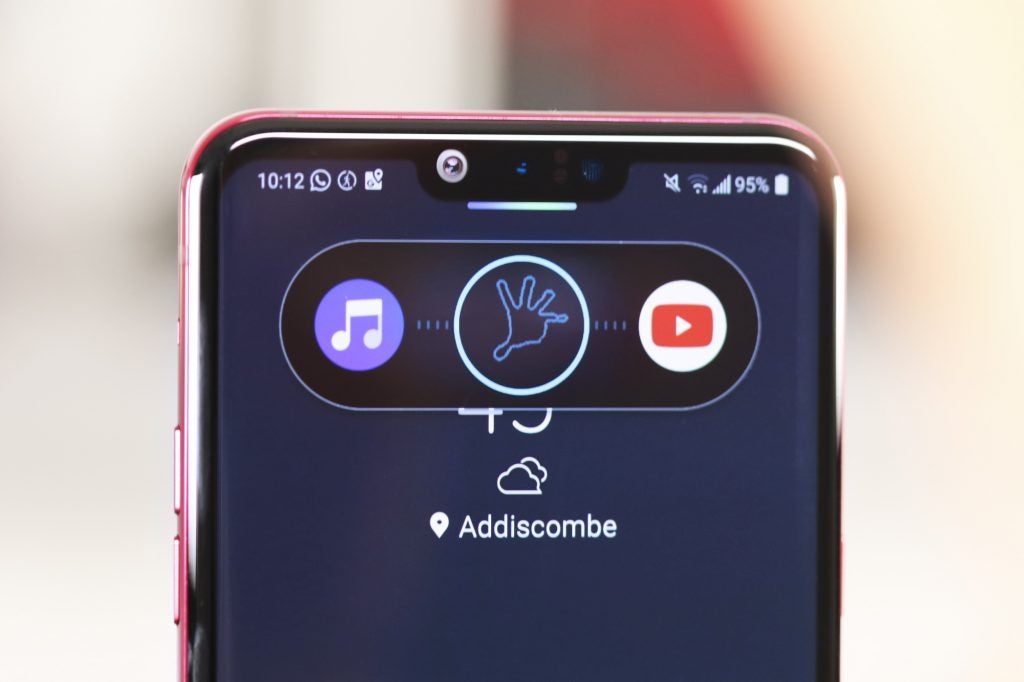
Shrinking the bezels on a phone usually results in the earpiece getting relegated to the top-most edge of the phone’s frame, which in turn results in poor audio quality. LG’s G8 has no visible earpiece to speak of . Instead, the phone’s entire screen acts as a speaker – and it isn’t half bad.
Considering the nature of the technology, I was expecting awful audio. However, paired with the downward-facing “Boombox” speaker chamber, the G8 is wholly listenable. The “Crystal Sound OLED Speaker”, as LG calls it, handles the higher frequencies, while the bass tones come from the grille set into the phone’s frame. Cover the latter and audio does break down, but in general use, it’s surprisingly clear and loud.
LG’s top phones have delivered on audio before, and the return of a Quad DAC and DTS:X 3D surround sound on the G8 help provide a rich and immersive experience whether you’re listening to music, playing games or watching movies with wired headphones. Both features can be toggled on and off from the phone’s quick-settings menu, but the real power comes from the impressive suite of tuning tools and presets on offer.
If your phone is your primary media player, especially if you mainly use it for music playback, the LG G8 would make an excellent choice for your next device.
The LG G8 might not turn heads like its competitors, but it’s still a looker
The Carmine Red model I’ve been testing is easily the most eye-catching finish in which you’ll find the G8 (with other options including Aurora Black, Platinum Grey, and an inoffensive shade of slate blue also on offer, depending on the market in which you pick one up). However, it doesn’t rock quite the same visual pop as Huawei’s, Oppo’s or Xiaomi’s colourful gradient-backed devices.
Beyond colour, you can’t fault LG for the cleanliness of the G8’s design. While many have berated the camera bump and the added bulk that such a trait brings to certain smartphones, they’ve become somewhat of an embellishment used to help push the visual identity of a phone. Here, LG is hoping the G8 will stand out for the reason it lacks a camera bump
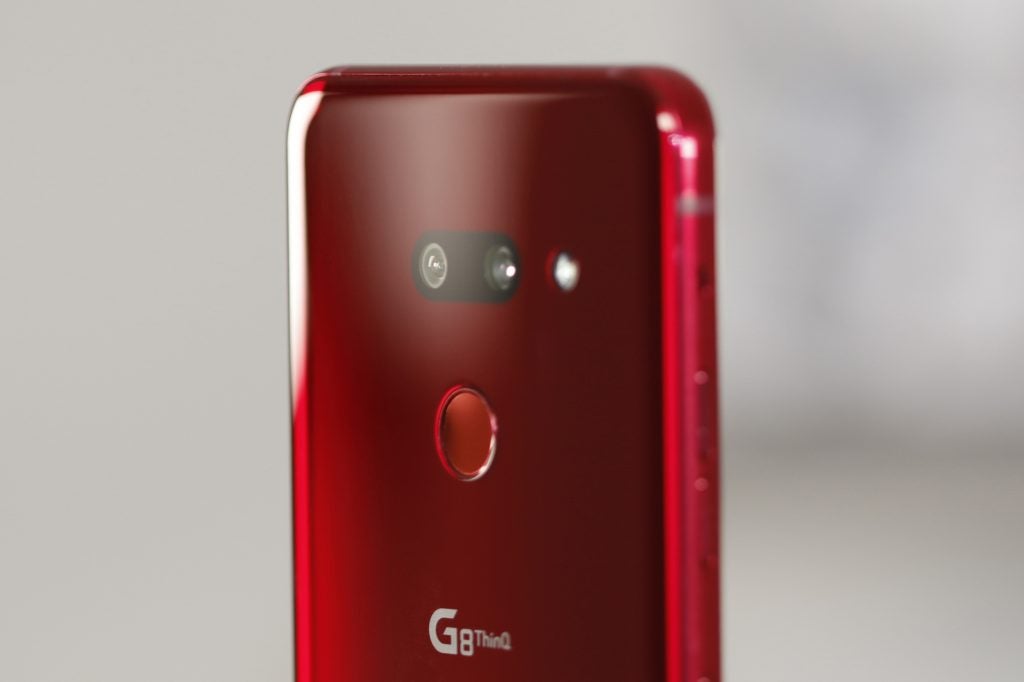
It’s a surprisingly refreshing trait that means the phone sits flat when placed on a table, plus will effortlessly slip into your pocket every time – despite it looking and feeling thicker and heavier than the competition.
There’s a pleasing symmetry to the G8’s body, with rounded Gorilla Glass 5 meeting with a curved metal frame that surrounds the boundary of the phone, mirrored by Gorilla Glass 6 on the back. Aside from a couple of logos and a rear-mounted fingerprint sensor, there’s little to distract from the clean aesthetics at play. The G8 is a great-looking and feeling handset, with impressive build quality to boot.
One caveat to such a featureless form is that the phone does like to move around of its own accord. If placed on a perfectly flat surface – a glass or laminate table, for example – the G8 will sometimes start to drift across it as if possessed. If you’re not careful, it will make its way to the nearest edge before throwing itself onto the floor (thankfully, this never happened while I was testing it).
The best way to negate its abilities as an air hockey puck is to set it down against something that can lock it in place, or buy a case with a little texture/grip.
As with the G7, the G8 retains IP68 dust- and water-resistance, along with a USB-C port and a 3.5mm headphone jack – a trait now extremely rare in the flagship space. The SIM tray in the phone’s right side also accommodates microSD cards up to 2TB, another feature that seems to be dying out now that internal storage capacities consistently reach beyond 64GB among the high-end contingent.
LG UX 8.0 on the LG G8 is an improvement, but still needs work
As for the software experience at play, LG has made strides in stripping back some of the heavier-handed traits that LG UX previously brought to the table. Running atop Android 9.0, UX version 8.0 as found on the G8 looks and feels cleaner than prior iterations of the overlay. However, that doesn’t change the fact that LG’s interpretation of Android won’t be to everyone’s tastes.
The Settings menu feels overloaded, with four tabs full of options. Plus, there are a number of LG apps that I doubt the average user will likely touch. There’s a store with access to both free and paid-for downloadable themes, as well as options to customise the wallpaper, icons and the phone’s always-on display, independently.
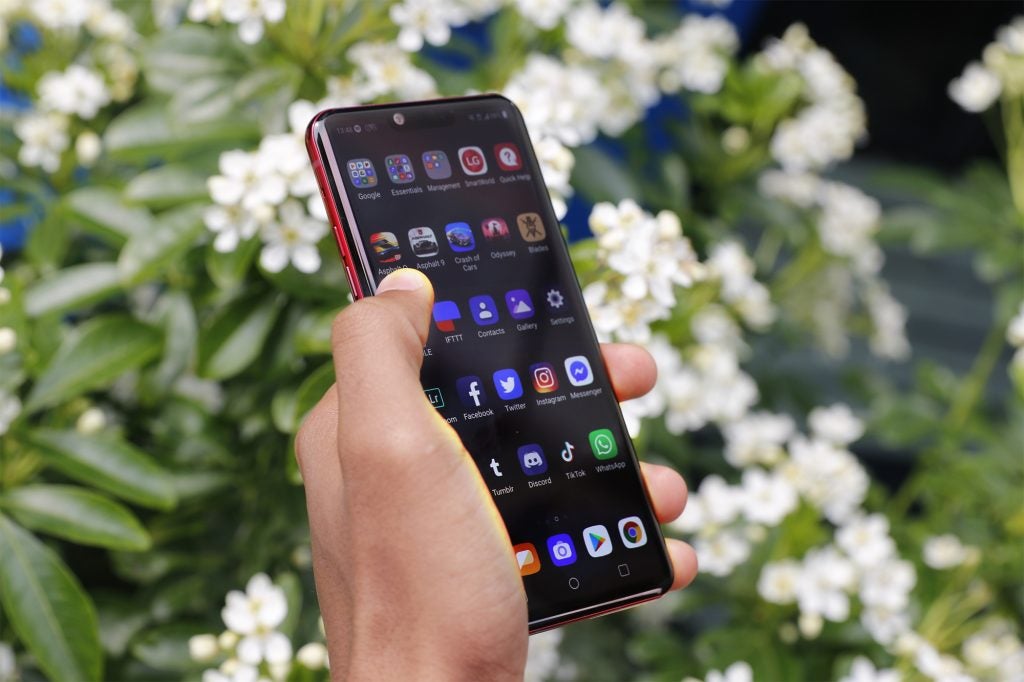
There’s no apps drawer by default (although it can be enabled via the Settings menu), while Google’s Assistant can be summoned with a swipe right from your primary homescreen or by pressing the dedicated hardware key on the left side of the G8, even when the phone is locked. It won’t surprise (most) Samsung users that having the Google Assistant only a button-press away is far more palatable than relying on some LG-made homebrew alternative, à la Bixby.
The Shortcuts and Context Awareness features are also appreciated inclusions, with the first highlighting quick access routes to reach choice features – swiping down on the fingerprint sensor to summon the notifications shade or double-tapping the volume keys to jump into the camera, for example. Meanwhile, the latter adds some integrated automation to the G8 experience.
Rather than relying on third-party services such as IFTTT, the G8 can natively be set to switch features such as Bluetooth and mobile data on or off, based on factors like location and time of day. It’s somewhat surprising that LG doesn’t make a bigger deal of the feature when you first set up the G8; but knowing it’s there I thought it best to make mention of this powerful talent.
The LG G8 performs as well as the best in the business
Qualcomm’s Snapdragon 855 has only just started making its way into smartphones, but it’s quickly cemented itself as one of the best pieces of silicon in the mobile space right now. Paired with 6GB of RAM, you’ll find no issue with the G8’s performance as a result.
It benchmarks well, too, with promisingly high scores that suggest that while it isn’t the most powerful flagship out there, it certainly isn’t a slouch. This is reflected in the general user experience and when partaking in more intensive tasks such as gaming or split-screen multitasking.
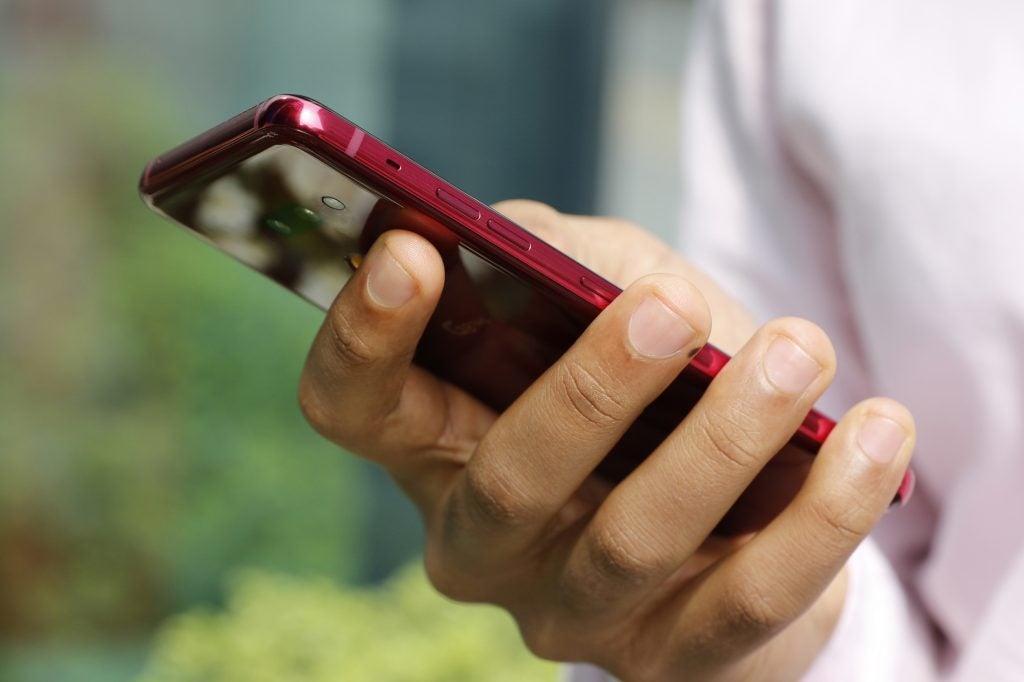
Over the course of my review period, I didn’t experience any distinct issues with the software or hardware. It just remains to be seen whether LG will stay on top of security updates and major Android release updates to ensure the G8 feels fresh later into its life – something over which the company proved a touch lax with the release of Android 9.0 for last year’s LG G7.
While 5G is an LG V50-exclusive feature, the phone still packs rapid 4G LTE support. Plus, with Bluetooth 5.0 onboard, the phone also gives you the option to connect to multiple devices simultaneously – ideal should you wish to stream audio to more than a single Bluetooth speaker or pair of headphones at the same time.
The battery may seem small but the LG G8 can last almost two days
As for longevity, I was disheartened to find that despite the phone’s size and weight the G8 packs a comparatively small 3500mAh battery. Samsung’s Galaxy S10 underwhelmed us on the battery front, with a similarly sized 3400mAh cell, so I was expecting much the same from the G8.
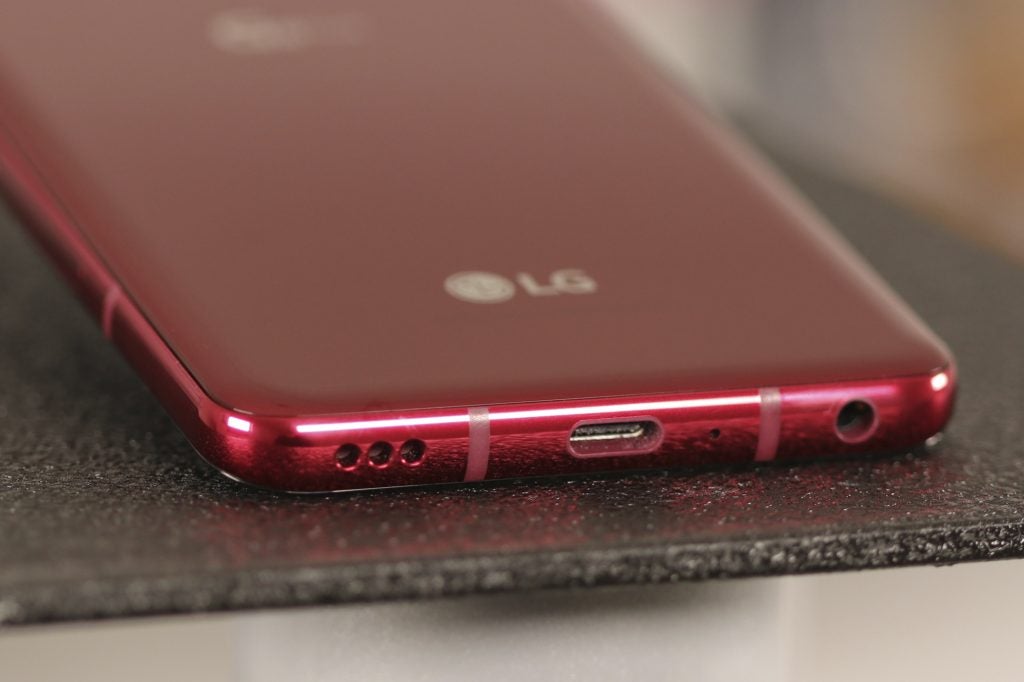
While it doesn’t match the impressive endurance of a phone with a super-4000mAh battery, such as the P30 Pro, the LG G8 does perform better than expected. I ended most days (usually running from 8am to midnight) at 50% charge or thereabouts, with a day and a half confidently possible – and two days if you’re checking Twitter and Instagram infrequently.
There’s also Qualcomm Quick Charge 3.0 fast-charging, enabling you to power up the phone from flat in under an hour and a half (with almost a day’s worth of use possible after just 30 minutes’ charge). The G8 also offers the convenience of wireless charging, even if the phone takes a few moments longer than most to acknowledge that it’s been placed on a charging pad.
The dual rear cameras on the LG G8 are capable but fall short of the competition
On the rear, you’ll find two cameras: a primary 12-megapixel snapper accompanied by an ultra-wide angle 16-megapixel sensor. There’s an alternative version of the G8 in markets such as Korea that features a triple rear-camera arrangement; however, elsewhere the two-camera model is the one you’re most likely to encounter.
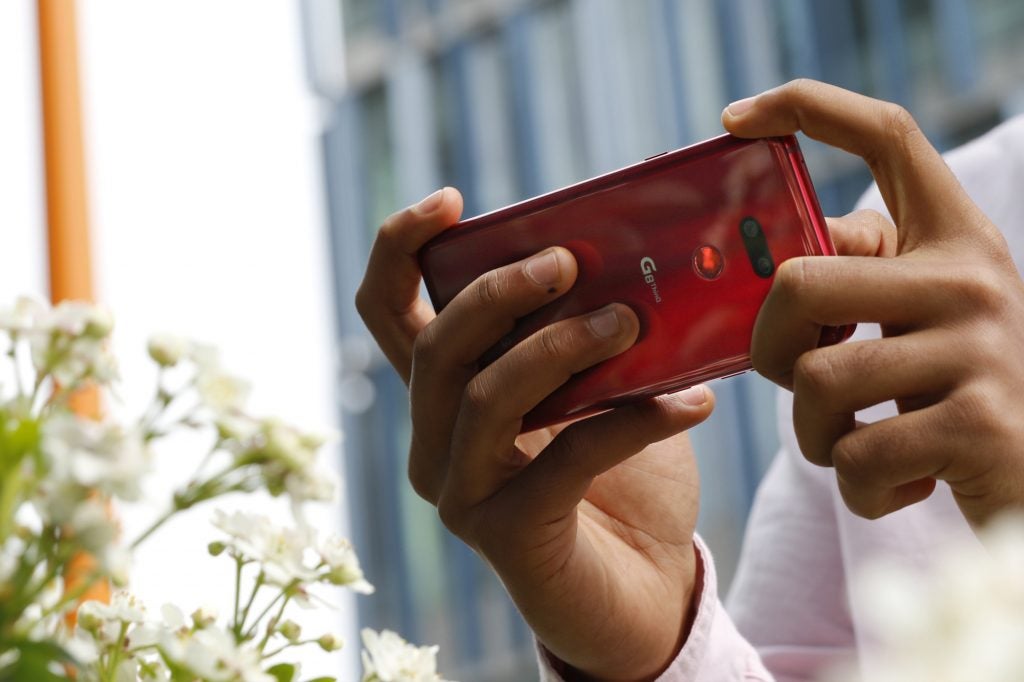
For most, Auto mode will cover almost all the bases when it comes to general shooting, with the phone’s AI Cam option in place to intelligently boost colour and contrast depending on the scene or subject that it detects. There’s also manual control, as well as a Portrait mode that lets you apply background blur around a subject and Studio mode for interchangeable virtual lighting states on a subject. Both work fairly well but struggle with fine detail when it comes to edge detection.



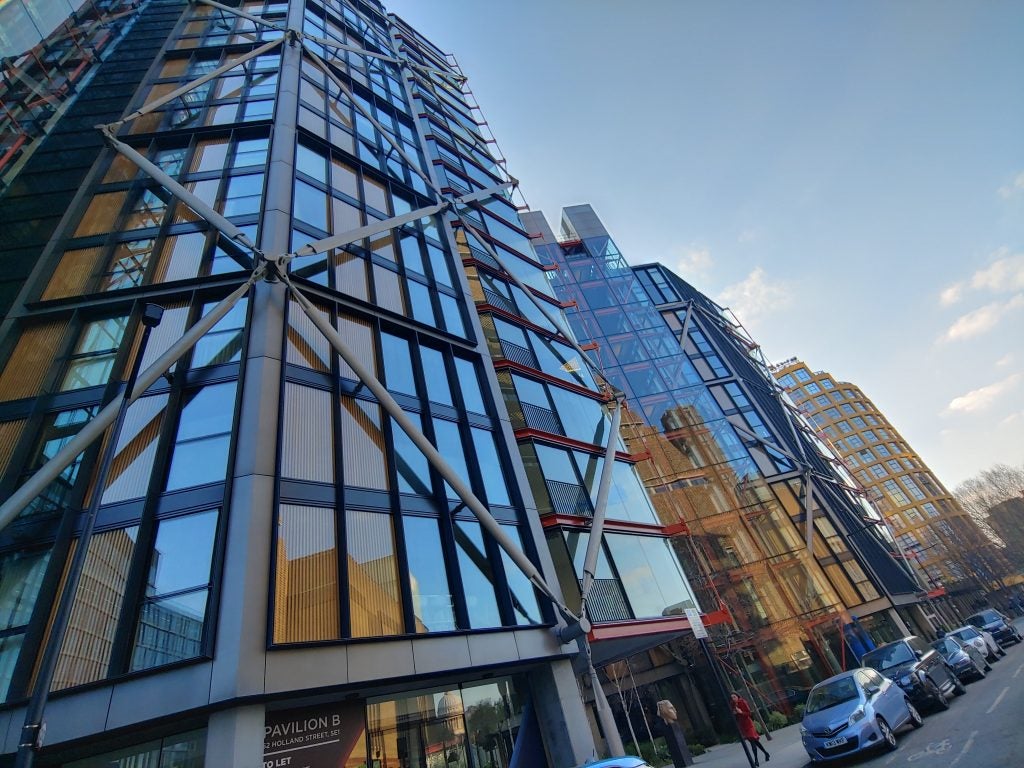

Low-light performance falls behind the likes of Google’s and Huawei’s efforts, especially when trying to use the wide-angle sensor. As such, relying on the phone’s “Night view” setting is needed if you want usable images when snapping in dark surroundings without the use of the flash.
The ability to record video with real-time adjustable background blur is rather impressive, as are the talents of the front-facing Z camera when used in conjunction with the 8-megapixel selfie snapper. It offers better edge detection for cleaner background blur and shots retain an impressive level of detail and dynamic range for a selfie camera.
Related: Best camera phones
Should I buy the LG G8?
In a vacuum, the LG G8 ThinQ is a well-rounded flagship phone with reliable top-tier performance, capable cameras, a great screen and decent battery life. However, slot it in among the competition and, as suspected, it melts into the crowd of similarly “fine” high-end phones.
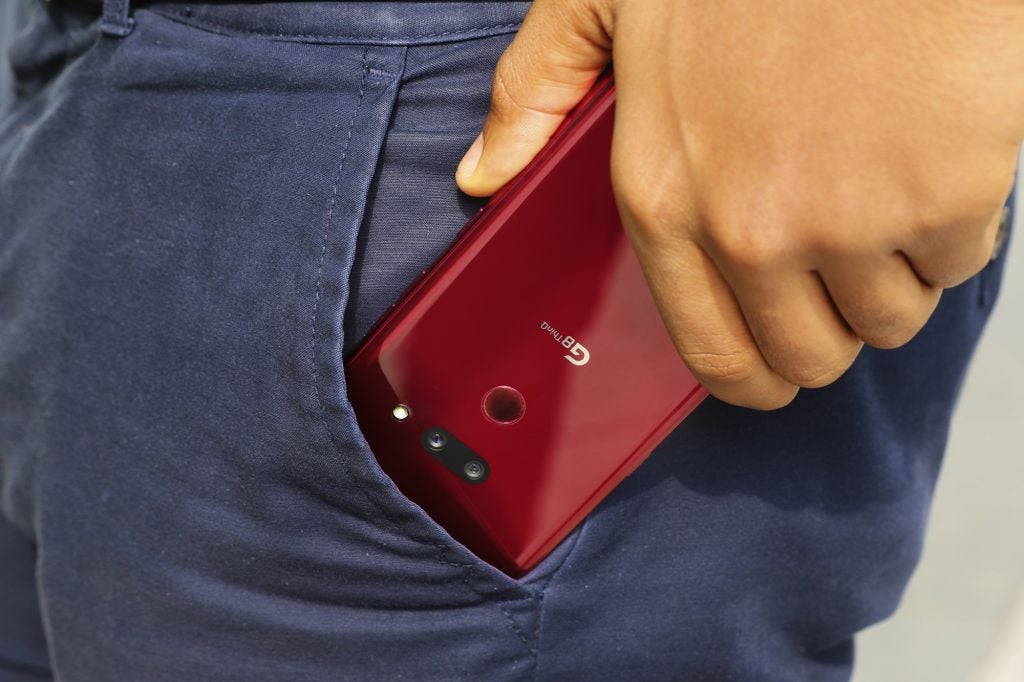
The LG G8 is very much a jack of all trades and master of none. The likes of Asus, Black Shark and Razer focus on gaming, Apple, Google, Huawei and Samsung all feature phones with killer cameras. Even outliers such as Motorola boast a mix of ease-of-use and, among its high-end handsets, modular versatility. LG hasn’t pushed the G8 in any one direction, and that makes it capable but forgettable.
Related: Best phone 2019
The one caveat to all of this falls to the phone’s audio credentials. If audio is the main driving force behind your next smartphone purchase then the LG G8 might be worth considering, but I’d argue that rivals offer more for your money.
LG G8 release date and price
While LG was initially cagey about pricing and availability, the phone is now on sale in markets including the US and Korea priced at US $849 (equivalent to £650) and ₩897,600 (equivalent to £610) respectively.
While no UK availability has yet been confirmed, should the G8 ThinQ touch-down here, I suspect that the phone will hit stores priced at £699. This would place it slap-bang between the Galaxy S10 and Galaxy S10e – arguably, its most like-minded rival, which retails for £669.
How we test phones
We test every mobile phone we review thoroughly. We use industry standard tests to compare features properly and we use the phone as our main device over the review period. We’ll always tell you what we find and we never, ever, accept money to review a product.


